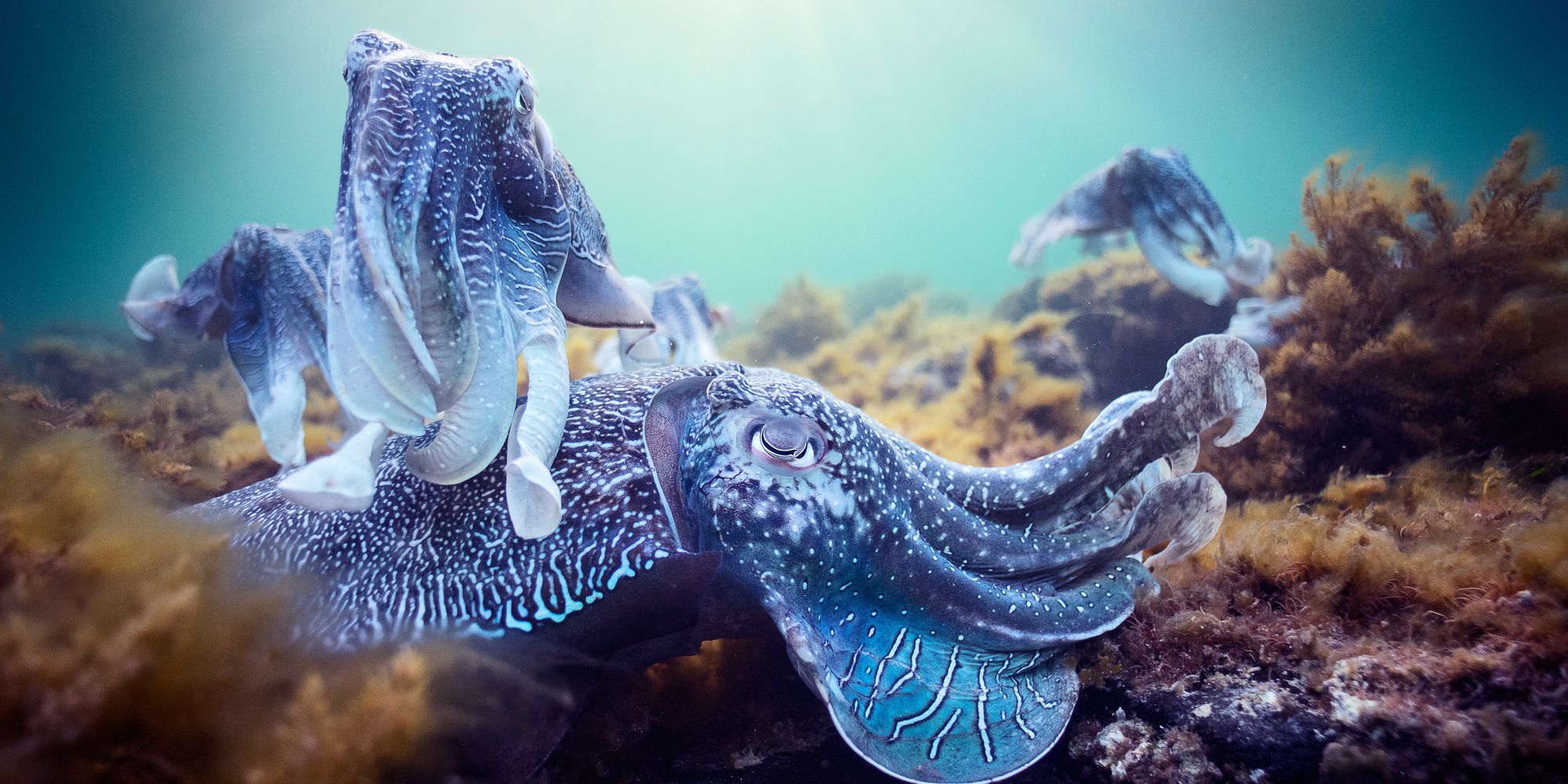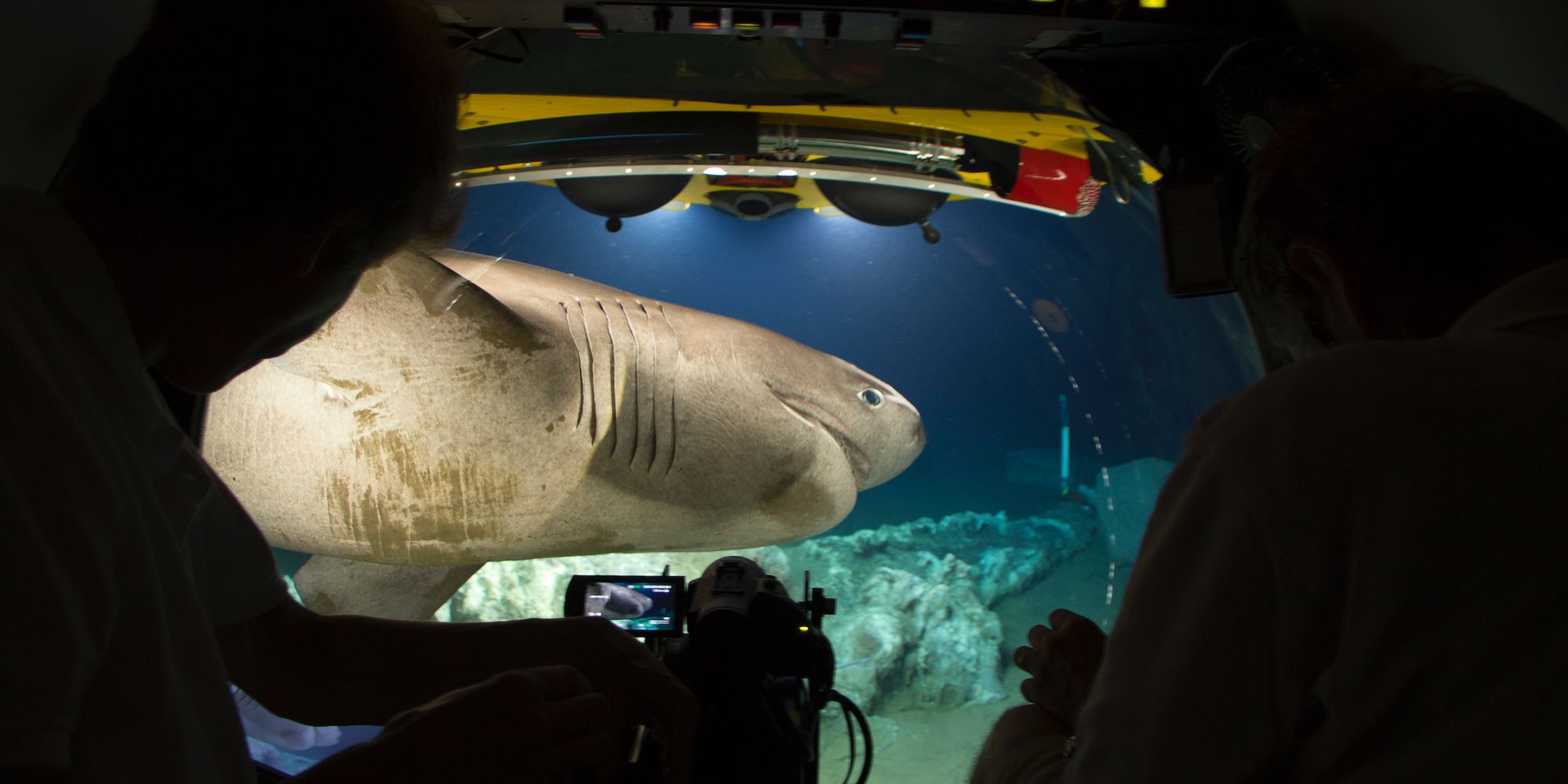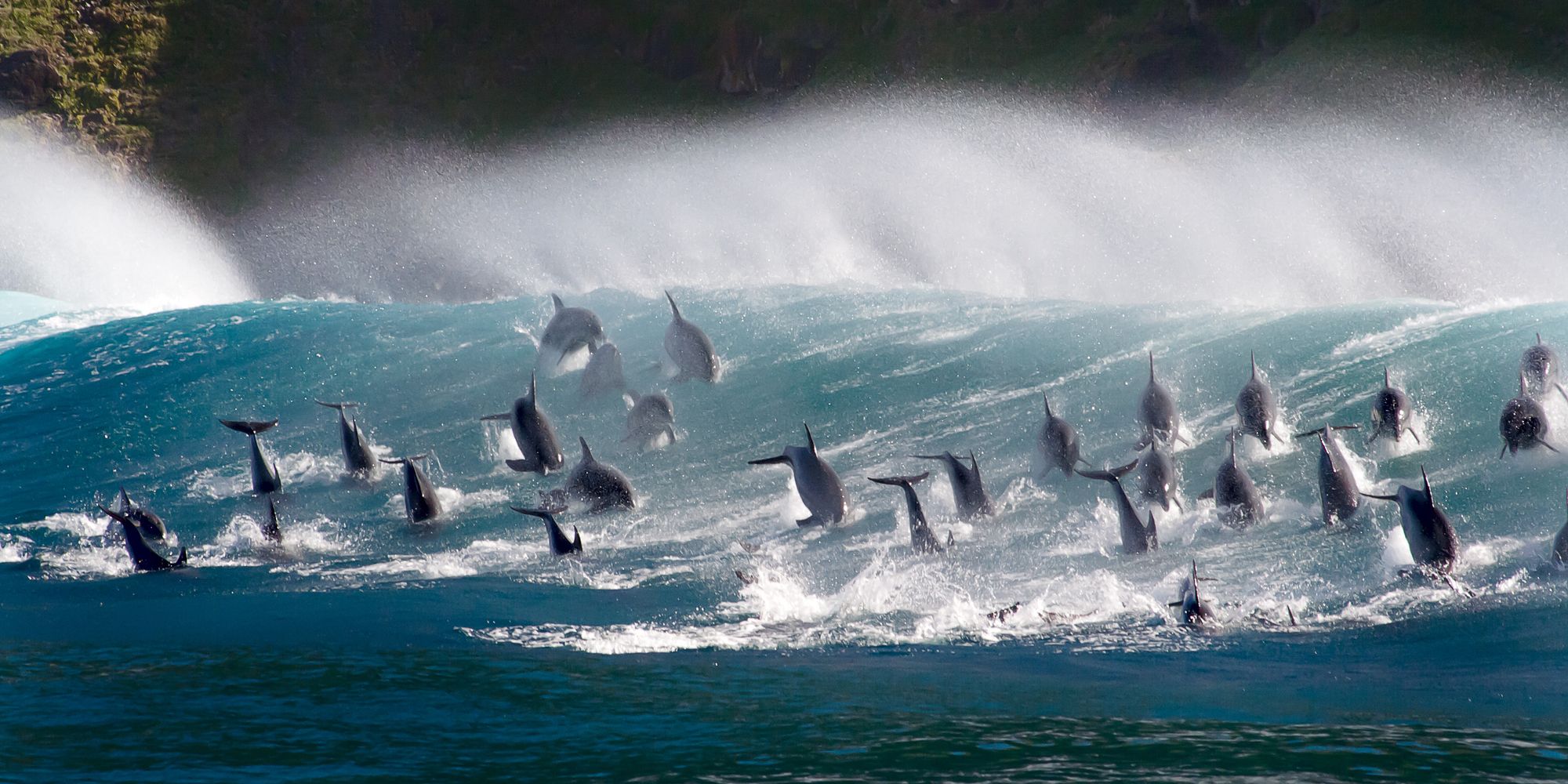Blue Planet II already aired last year in the U.K., but now one of the most visually stunning and incredibly well made nature documentaries of all time is in the U.S., airing on BBC America (the premiere will be simulcast across all the company's networks, including AMC, WE tv, IFC, and SundanceTV) for the next several weeks. It is the BBC Natural History Unit’s return to the oceans after 17 years, when the first landmark series took the world by storm. This time, the documentarians have a whole set of new filmmaking tricks and technology up their sleeves, which gives them (as well as viewers and scientists) an unprecedented look at and inside the lives of the many creatures that call the oceans home.
The series comes to the States at just the right time. Who couldn’t use a respite from the onslaught of the hundreds of scripted television series gaming for viewers’ eyeballs? Rather than wondering what you may have missed out on by forgetting to record the latest Ryan Murphy series or trying to find the time to fit in all your favorite episodes of ER, Blue Planet II invites you to take in the splendor of nature and to behold the wonder and weirdness of so many creatures the lives of which we still know so little about.
Related: The Best TV Shows You Should Catch Up On Before 2017 Ends
Narrated by Sir David Attenborough, the series makes terrific use of the now 91-year-old broadcaster’s dulcet tones, turning each installment into a mix of adventure story, science lesson, and a call to action, never shying away from addressing the negative impact humankind is having on the environment. The result is one of the best nature documentaries you will ever see, one that is like nothing on TV, because so much of what Blue Planet II offers its viewers has never been seen at all.
It is a testament to how well the Natural History Unit knows their stuff that they were able to assemble seven astonishing hourlong episodes from over 6,000 hours of footage they’d shot, almost entirely in an environment ill suited for human beings. And yet, nevertheless, the filmmakers were still able to capture some seriously breathtaking sequences, featuring surfing dolphins, the rarely seen “boiling sea”, gender-changing fish, and the brilliance of an octopus that repeatedly outmaneuvers and outsmarts a pack of hungry pyjama sharks, first by inserting its tentacles into the predator’s gills, effectively suffocating it, and then by covering itself in a hastily made suit of armor made from discarded shells on the ocean floor.
That last bit is one of many examples of what the filmmakers on Blue Planet II have captured that is more than a feast for the eyes; it’s incredibly valuable to the scientific community as well. The groundbreaking nature of the series underlines the importance of the documentary and elevates the program beyond its enormous entertainment value. The series splits the difference in that regard by using incredibly high production values, the aforementioned Attenborough, and a score by Hans Zimmer (fans of his Inception and Dark Knight scores will immediately recognize many notes heard here, and there’s more than a few similarities between Blue Planet II and the composer’s work on Disney’s nautically inclined Pirates of the Caribbean films). Those components add up to what is essentially blockbuster filmmaking applied to a nature series with the ability to actually teach its audience something.
Whether or not that is off putting to you depends on the mileage you get from this sort of thing, but even if you're feeling a little learning averse on a Saturday night, rest assured: Blue Planet II never feels like homework. Each episode is composed in such a way as to maximize its informational impact as well as its storytelling potential. Whether the crew is diving into the largest abyss on the planet and discovering a lake of super-salty water on the ocean floor, or watching as a cuttlefish mesmerizes its prey with a dazzling display by rapidly altering the pigments in its skin, the sense of discovery and awe entertains as much as it informs, fulfilling both functions so well the series is truly in a class of its own.
What’s more, each episode features a short supplement at the end, a 10 minute look into how the BBC’s crew managed to deliver such impressive footage in an environments that’s so remarkably difficult to shoot in. Normally, such a glimpse behind the curtain might undo some of the magic that’s on screen, but that’s not the case here. Instead, it affords the viewer greater insight into what a remarkable achievement the new series actually is. Interviews with the crew detail one harrowing journey in a deep sea submersible where a small leak caused a puddle to form on the sub’s floor half and hour from the surface. It’s the kind of scenario James Cameron would turn into a blockbuster film, and here it becomes a thrilling supplement to show in question.
Perhaps that is the greatest achievement of Blue Planet II: the way in which everything it presents feels so essential. That an incident with the crew — that they managed just fine, by the way — is an added bonus goes to show you just how monumental an undertaking this actually was. And that undertaking has been assembled into a thrilling series that is nature documentary filmmaking at its very best.
Next: Counterpart: Why Starz’ Sci-Fi Espionage Thriller is 2018’s First Must-See Show
Blue Planet II premieres tonight on BBC America, AMC, IFC, WE tv, and SundanceTV @9pm. The series continues next Saturday with ‘The Deep’ @9pm on BBC America.



